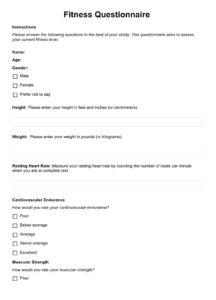Creating a successful small group training program requires proper planning and organization. A well-structured template serves as a valuable tool for fitness professionals and trainers. This article provides a comprehensive small group training program template to guide you in designing and implementing an effective program for your clients.
The template outlines the essential elements of a small group training program, including program design, session structure, and evaluation methods. By providing a structured framework, this template enables you to deliver engaging and tailored workouts while ensuring the safety and progress of your participants.
Program Design
The program design should consider the target audience’s fitness goals, experience level, and any limitations or injuries. It should include specific objectives, a progressive exercise plan, and variations to accommodate different abilities. The program should be challenging yet achievable, fostering motivation and adherence.
The session structure should be well-organized and engaging. It should include a warm-up, skill development, exercise intervals, and a cool-down. The warm-up prepares participants for physical exertion, while the skill development focuses on technique and movement quality. The exercise intervals provide the primary training stimulus, and the cool-down promotes recovery.
Exercise selection should be varied, including strength training, cardiovascular activities, and flexibility exercises. Strength training builds muscle mass and strength, while cardiovascular activities improve heart health and endurance. Flexibility exercises enhance range of motion and prevent injuries.
Proper progression is crucial to avoid plateaus and ensure continued improvement. Gradually increase the intensity, duration, or resistance of exercises over time to challenge participants without overwhelming them. This progressive overload principle is essential for maximizing results.
Session Structure and Progression
Session structure should allow for flexibility and customization based on participant progress and feedback. Regular assessments, such as fitness tests or surveys, help monitor progress and identify areas for improvement.
In addition to physical training, consider incorporating elements of nutrition counseling, lifestyle coaching, and motivation. These aspects enhance the overall health and well-being of participants and promote long-term success in reaching their fitness goals.
Safety should be a top priority throughout the program. Ensure participants have undergone a medical screening and are cleared for physical activity. Proper exercise form and technique should be emphasized to minimize the risk of injuries.
Communication is vital for building rapport with participants and ensuring they feel supported. Regularly check in with them, provide feedback, and address any concerns they may have. Fostering a positive and inclusive atmosphere is essential for maximizing participant engagement and adherence.
Regular program evaluation is crucial to ensure its effectiveness and make any necessary adjustments. Collect participant feedback, track progress through assessments, and use data to identify areas for improvement. By continuously evaluating and refining the program, you can optimize its impact and ensure it remains relevant and engaging.

